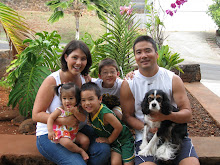 The best foods you can feed your children are the ones that are
The best foods you can feed your children are the ones that are (1) grown yourself or
(2) purchased locally through a farmers market – a place where you can ask the grower what s/he used for pesticides, aka poisons.
Certain Foods Are Exempt
Scary thought but certain foods are exempt from the US Department of Agriculture’s list of dangerous toxins that actually work their way into the fruit or vegetable pulp. What’s it all mean?
You can’t wash off the pesticides, even with a scrub brush. Many pesticides are oil-based so they adhere to the fruit or vegetable during rainy days. These pesticides are used, of course, to kill insects that damage the food as it grows. But that’s not all.
Sprays are also used to increase the size of the fruit without adding much to the taste of the fruit. Ever eat a huge strawberry that just tasted blah. No zippy, strawberry tang? The fruits and vegetables you purchase at the local supermarket are bred for appearance and long shelf life. That’s why out-of-season tomatoes are as hard as golf balls. They travel without bruising and have a long, long shelf life.
Here’s the point: most foods are bred for reasons other than nutrition and good taste. These vegetables and fruits, grown on huge commercial farms, are sprayed constantly to keep bugs and critters at bay. But those sprays make their way into the food and, ultimately, into you, your child and other family members.
What About All-Natural and Organic?
Better, but be forewarned. There are numerous definitions – some legal within certain states – that describe what can be labeled allnatural. Perfect example? MSG, aka monosodium glutamate. This isn’t something that kids should ingest. It leads to hyperactivity, hot flashes and other negative symptoms. Yet, the fact is MSG is, indeed, all natural. It’s just processed to death. The point is, I don’t want my brood eating MSG but it may be contained in “all natural” foods. Check the product label.
MSG is often disguised as “natural flavors” or “natural flavor additives” because, technically, they are.
Don’t be misled by organic and all natural labels. All is not as it appears in many cases – even when the items are purchased in health-food stores!
How Should I Prepare Foods?
Call me a pessimist but I assume all foods are coated with chemical sprays and laced with hormones. The first thing I do is wash all fruits and veggies using a scrub brush. This removes dirt, tiny insects and at least some of those oil-based sprays on your foods.
I then dry each item carefully, rubbing hard enough to remove more pesticides but not bruise the fruit or veggie.
I bag hard fruits like apples and peaches and place in the fridge within easy reach of my kids. Soft fruits like bananas and mangos I leave out, but use quickly before they get too mushy – something my kids won’t tolerate.
Rinse all lettuces and greens well. Spin dry, wrap in cloth toweling and store in the fridge. The cloth will absorb a little moisture which will prevent the greens from going limp.
Finally, I avoid buying processed foods whenever possible. Sorry, but I can’t even understand some of the ingredients in these boxed lunches and sugary snacks. If you keep these foods out of your house, you and your kids won’t be tempted.
Hey, anybody got any other suggestions for protecting our kids from the foods they eat?









